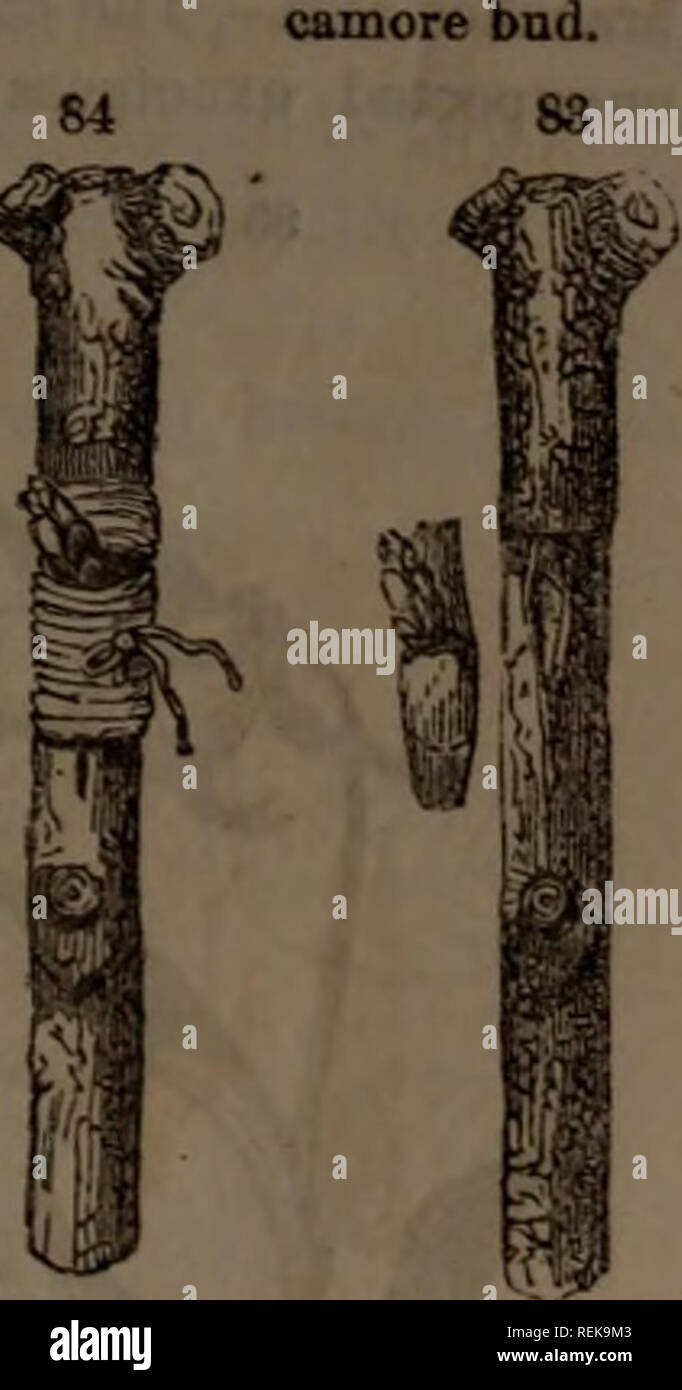. Class-book of botany : being outlines of the structure, physiology and classification of plants : with a flora of the United States and Canada. Botany; Botany; Botany. Vernation. 77, of birch leaf; 78, of lilac, (imbricate); 71». cherry leaves, (convolute); 80, dock bud, (revolute); 81, balm of Gilead, (involute). 214. The general vernation is loosely distinguished in descriptive botany as valvatc (edges meeting), and imbricate (edges overlapping), terms to be noticed hereafter. The val- vate more often occurs in plants with opposite leaves. Imbricated vernation is Equitant (riding astraddle

Image details
Contributor:
The Book Worm / Alamy Stock PhotoImage ID:
REK9M3File size:
7.1 MB (172.8 KB Compressed download)Releases:
Model - no | Property - noDo I need a release?Dimensions:
1145 x 2182 px | 19.4 x 36.9 cm | 7.6 x 14.5 inches | 150dpiMore information:
This image is a public domain image, which means either that copyright has expired in the image or the copyright holder has waived their copyright. Alamy charges you a fee for access to the high resolution copy of the image.
This image could have imperfections as it’s either historical or reportage.
. Class-book of botany : being outlines of the structure, physiology and classification of plants : with a flora of the United States and Canada. Botany; Botany; Botany. Vernation. 77, of birch leaf; 78, of lilac, (imbricate); 71». cherry leaves, (convolute); 80, dock bud, (revolute); 81, balm of Gilead, (involute). 214. The general vernation is loosely distinguished in descriptive botany as valvatc (edges meeting), and imbricate (edges overlapping), terms to be noticed hereafter. The val- vate more often occurs in plants with opposite leaves. Imbricated vernation is Equitant (riding astraddle), when conduplicate leaves alternately embrace—-the outer one the next inner, by go. vernation of Sy. its unfolded margins, as in the privet and iris. Obvolute, or half-equitaut, when the outer leaf< embraces only one of the margins of the inner, as in the sage. Triquetrous, where the bud is triangular in sec- tion, and the leaves equitant at each angle, as in the Cariccs. 215. The principle of buddixg. Each leaf-bud may be regarded as a distinct individual, capable of vegetating either in its native position, or when removed to another, as is extensively practiced in the important operation of budding. 216. Bulblets. In the tiger-lily, Cicuta bulbifera, and Aspidium bulbiferum, the axillary buds spon- of budding." taneously detach themselves, fall to the ground, and become new plants. These remarkable little bodies are called bulblets.. 83, S4, Showing the process. Please note that these images are extracted from scanned page images that may have been digitally enhanced for readability - coloration and appearance of these illustrations may not perfectly resemble the original work.. Wood, Alphonso, 1810-1881. New York : A. S. Barnes & Burr